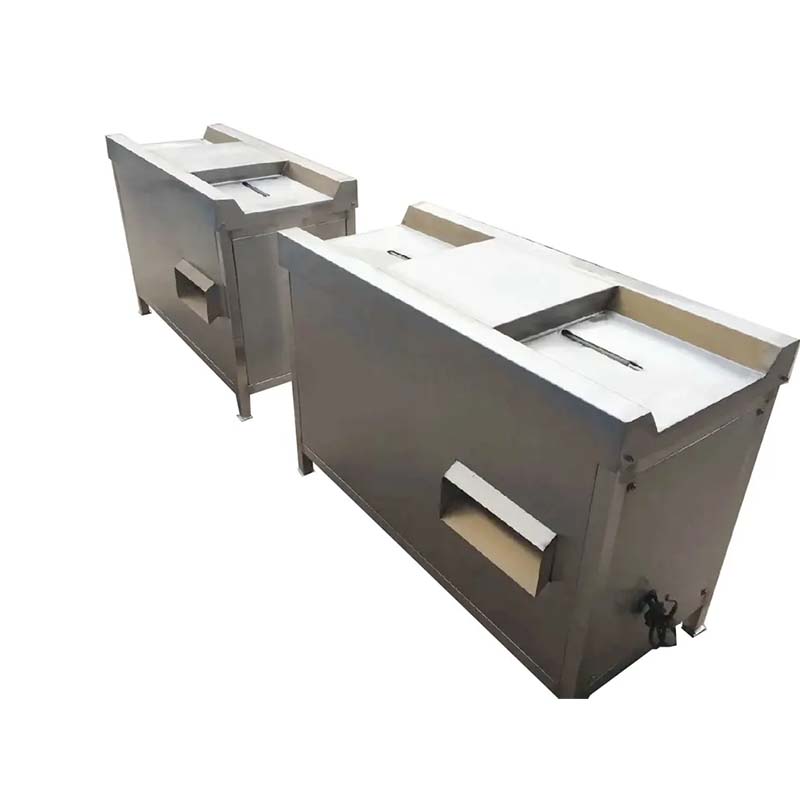animal feed hammer mill
Dec . 16, 2024 12:55 Back to list
animal feed hammer mill
The Importance of Hammer Mills in Animal Feed Production
In the realm of animal feed production, the efficiency and quality of feed ingredients are paramount to the health and productivity of livestock. One of the key pieces of machinery that plays a crucial role in this process is the hammer mill. This versatile tool is essential for the grinding and pulverizing of various feed materials, ensuring they are in the optimal form for animal consumption.
What is a Hammer Mill?
A hammer mill is a machine that utilizes a series of hammers, attached to a rotating shaft, to crush, grind, and pulverize raw materials. The design typically includes a chamber with a screen that allows particles of a specific size to exit while retaining larger pieces for further grinding. Hammer mills are commonly used for processing grains, forages, and other feed materials, making them indispensable in the animal feed industry.
Benefits of Using Hammer Mills
1. Improved Feed Quality The grinding process in a hammer mill produces a uniform particle size, which is crucial for the digestibility of feed. Livestock can more easily break down uniformly sized particles during digestion, leading to better nutrient absorption and overall health.
2. Versatility Hammer mills can process a wide variety of materials, from corn and soybeans to alfalfa and other forages. This versatility allows feed manufacturers to create tailored feed formulations that meet the specific dietary needs of different animal species.
3. Enhanced Mixing Efficiency When incorporated into feed production, hammer mills can easily blend various ingredients into a homogeneous mixture. This is essential for ensuring that each animal receives the proper proportions of nutrients.
animal feed hammer mill

4. Cost-Effectiveness By allowing for the use of a variety of raw materials and reducing the need for pre-processing, hammer mills can significantly lower the overall production costs of animal feed. They enable manufacturers to optimize their resources and reduce waste, ultimately leading to a more sustainable production approach.
5. Energy Efficiency Modern hammer mills are designed to be energy-efficient, utilizing less power while maintaining high throughput rates. This results in lower operational costs and reduced environmental impact, aligning with the growing emphasis on sustainable agricultural practices.
Maintenance and Operation
To ensure the longevity and efficiency of a hammer mill, proper maintenance is essential. Regular inspection of hammers and screens is crucial as worn-out components can lead to reduced performance and increased energy consumption. Proper lubrication of moving parts also plays a significant role in minimizing wear and tear.
Moreover, operators should be trained in the correct settings for the type of feed material being processed. Adjusting the speed of the rotor, the size of the screens, and the feed rate can significantly impact the quality of the final product.
Conclusion
In conclusion, hammer mills are a fundamental component in the animal feed production industry. Their ability to efficiently grind and blend a variety of feed materials ensures that livestock receive high-quality nutrition tailored to their needs. As the demand for animal products continues to grow, the role of hammer mills in promoting efficiency and sustainability in feed production will undoubtedly become even more significant. With ongoing technological advancements, we can expect hammer mills to evolve, further enhancing their effectiveness and contribution to the agricultural sector. By prioritizing the investment in such equipment, feed manufacturers can ensure they meet the nutritional demands of livestock, ultimately supporting the health and productivity of animals around the world.
-
Hot Sale 24 & 18 Door Rabbit Cages - Premium Breeding Solutions
NewsJul.25,2025
-
Automatic Feeding Line System Pan Feeder Nipple Drinker - Anping County Yize Metal Products Co., Ltd.
NewsJul.21,2025
-
Automatic Feeding Line System Pan Feeder Nipple Drinker - Anping County Yize Metal Products Co., Ltd.
NewsJul.21,2025
-
Automatic Feeding Line System - Anping Yize | Precision & Nipple
NewsJul.21,2025
-
Automatic Feeding Line System - Anping Yize | Precision & Nipple
NewsJul.21,2025
-
Automatic Feeding Line System-Anping County Yize Metal Products Co., Ltd.|Efficient Feed Distribution&Customized Animal Farming Solutions
NewsJul.21,2025






